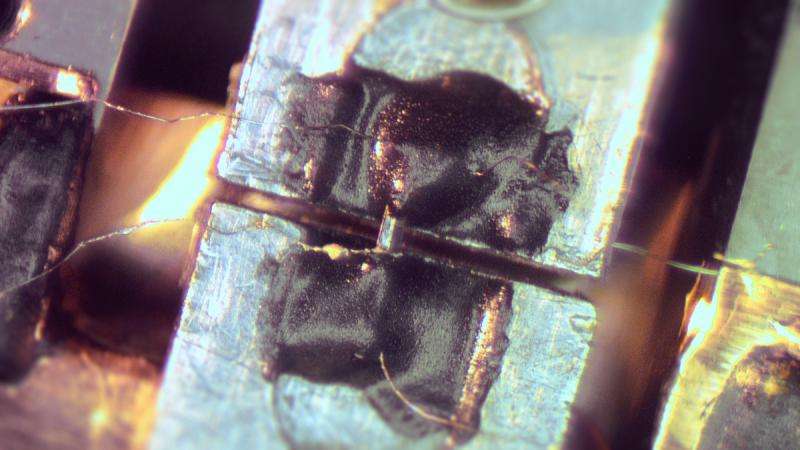Tiny tug unleashes cryogenic currents

Researchers have found that a small stretch is enough to unleash the exotic electrical properties of a newly discovered topological insulator, unshackling a behavior previously locked away at cryogenic temperatures.
The compound, called samarium hexaboride, has been studied for decades. But recently it has enjoyed a surge of renewed interest as scientists first predicted and then discovered that it was a new type of topological insulator—a material that banishes electrical currents from its interior and forces them to travel along its periphery. That behavior only emerges at around 4 degrees above absolute zero, though, thwarting potential applications.
Now, experimentalists at the University of California, Irvine (UCI), working with JQI Fellow Victor Galitski and former JQI postdoctoral researcher Maxim Dzero (now at Kent State University), have found a way to activate samarium hexaboride's cryogenic behavior at much higher temperatures. By stretching small crystals of the metal by less than a percent, the team was able to spot the signature surface currents of a topological insulator at 240 K (minus 33 C)—nearly room temperature and, in any case, a far cry from 4 K. The currents even persisted once the strain was removed.
Their technique, which was recently reported in Nature Materials , uses piezoelectric elements that bend when they are fed with an electric current. By suspending a sample of samarium hexaboride between two titanium supports and pulling on one side, researchers could measure the crystal's electrical properties for different temperatures and amounts of stretch.
Last year, Galitski partnered with the same experimental group at UCI and discovered a potential application for samarium hexaboride's unusual surface currents. They found that holding a small crystal at a fixed voltage could produce oscillating currents on its surface. Such tick-tock signals are at the heart of modern digital electronics, but they typically require clocks that are much larger than the micron-sized crystals.
The new result might make such applications more likely, and it could even be achieved without any piezo elements. It may be possible to grow samarium hexaboride as a thin film on top of another material that would naturally cause it to stretch, the researchers say.
More information: A. Stern et al. Surface-dominated conduction up to 240 K in the Kondo insulator SmB6 under strain, Nature Materials (2017). DOI: 10.1038/nmat4888
Journal information: Nature Materials
Provided by Joint Quantum Institute



















